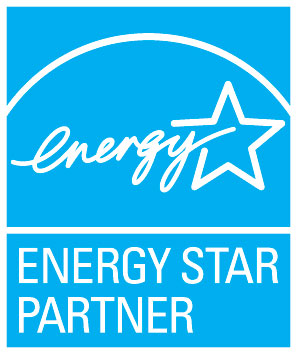 This week brings me back to the great city of Atlanta, this time for 2 quick classes. The first class is a mandatory 2-day class for all ENERGY STAR® raters who wish to continue with the program after January 1st of 2012. Based on my schedule for this year, it was simply best to get it out of the way early. Unfortunately, the fine folks at ENERGY STAR are still trying to get everything sorted out as this is a huge undertaking & the mandatory test will not be available until sometime in March. The second class is an Advanced HVAC class for Raters that follows the ENERGY STAR (ES) class. Both of these classes are being taught by Allison A Bailes III of Energy Vanguard which I have written about in prior posts.
This week brings me back to the great city of Atlanta, this time for 2 quick classes. The first class is a mandatory 2-day class for all ENERGY STAR® raters who wish to continue with the program after January 1st of 2012. Based on my schedule for this year, it was simply best to get it out of the way early. Unfortunately, the fine folks at ENERGY STAR are still trying to get everything sorted out as this is a huge undertaking & the mandatory test will not be available until sometime in March. The second class is an Advanced HVAC class for Raters that follows the ENERGY STAR (ES) class. Both of these classes are being taught by Allison A Bailes III of Energy Vanguard which I have written about in prior posts.
One interesting item I am doing during this class is tweeting it live with the hash tag – #ES3. In some ways that actually makes writing this post easier, while on the other hand all 34 tweets are in reverse order and we did jump around a bit today. As a quick FYI, no lunch is being served, so Southface still wins the best food competition, for those of you that might be curious about it.
Quick notes on the new program:
First, you might look for the new ES label with the version number listed on it. This is being done to show which program a house was qualified under. The program timeline is based on the completion & permitting dates. Version 2.5 starts April 1st (and that’s no joke) while 3.0 is slated for Jan. 1st, 2012 – though some are pushing for a later date so they have a full year to implement it. One great place to find information on all the guidelines & checklists based on the different versions is on this special ES page.
The new partnership requirements:
As I mentioned above all rater’s that wish to rate ES homes will have to complete an approved class & take a test. The nice item is that, this class satisfies RESNET CEU requirements for the three-year period before you have to recertify (18 credits). They have also added one other caveat that might hurt in less energy conscious areas & that is we must rate & certify one house a year. Your HVAC installers are a major piece of this program and will have to be trained via their associated trade groups to complete & work on ES homes.
Ah the builders, my oh my, don’t they have it easy? I mean, all they need to do is sign up as a partner (no partnership – no label), and then watch a quick one-hour video on the web & take an online test – done… With that said, most everyone in the ES trainers & instructors group feel that approx 50% of them will drop out of the program. Why? Well we will get to that in just a few minutes…
Architects & Spec Builders:
 If you have an architect, it would be best get them involved early. The reasons for this revolve around the thermal checklist – meeting its requirements & details. Expect to see a lot more specs coming out with raised heel trusses for those that want to use cellulose & fiberglass insulation. I cannot stress strongly enough that you should look for or talk to your architect about using the Designed to earn program. More information on this can be found at http://energystar.gov/DesignedToEarn and on our site. (Designed to Earn Energy Star Explainer)
If you have an architect, it would be best get them involved early. The reasons for this revolve around the thermal checklist – meeting its requirements & details. Expect to see a lot more specs coming out with raised heel trusses for those that want to use cellulose & fiberglass insulation. I cannot stress strongly enough that you should look for or talk to your architect about using the Designed to earn program. More information on this can be found at http://energystar.gov/DesignedToEarn and on our site. (Designed to Earn Energy Star Explainer)
HERS & McMansion’s:
Unlike the older ES program where a house had to either reach an 80 or 85 on the HERS scale (0 = Net Zero house – 100 = 2004 Code Compliant house), they have introduced us to a floating HERS score. This score is based on a “virtual model home” being built to the ES prescriptive path specifications. What this means, is that most newer homes will now have to score in the 70’s to earn the new 2.5 / 3.0 ES label instead of the 80’s. Ahhh but wait, there is more…
The McMansion penalty aka SAF:
Unlike *LEED & other programs, ES has added in a Size Adjustment Factor (SAF) where larger homes above a certain SF will have to meet a tougher HERS score. The benchmark size is based on the number of bedrooms in a house – if you go above it, the score you need to meet goes down. In order to calculate this, you take the benchmark size, divide it by the actual square footage & hit the square root key twice. You take that number and multiply it by the HERS reference score & you have your new target score – aka the McMansion penalty #. Fortunately, this point penalty can actually be offset by adding solar / wind / wave power, unlike other versions.
* As LEED for Homes & many other programs require homes to meet ES guidelines, this will also impact them – so don’t forget to start planning for it now…
Prescriptive Path?
For those use to ES V.2, the BOP has been replaced with the prescriptive path, which in many places exceed the 2009 IECC guidelines, while in a few others it is a little weaker. This version has some nice selling points and a few downsides as well. First, only houses under the benchmark size can be qualified under this path. Second, there is no rating or modeling work that needs to be done, which can save a builder or architect some money on the front end. With that said, just like a prescription – you need to follow everything to the T, there are no tradeoffs allowed. Just like the performance path, you will have to pay for two inspections and the four checklists to be completed.
Performance Path:
Talk about easy – the performance path allows for certain tradeoffs as long as you meet the target HERS score. If a customer wants a larger stained glass window, a McMansion, a…, you will have to go with the performance path. Just like above you will have two inspections at minimum, the four checklists will have to be completed & you will have to pay for a full-blown rating & probably some modeling work.
The Four Checklists:
Instead of the single checklist, require in Version 2, there are now four checklists. Two of the newer ones deal with the HVAC system (one completed by the Rater, and one by the Installer), which has been described as tricky at best (I don’t know – we will find out tomorrow). There is also a new Water Management checklist, which is to be completed by the builder. Today we spent most of our time looking at the updated Thermal Enclosure Checklist. During the transition period from version 2 to 3, all four checklists, have to be completed, and the catch is any failures detected are fine unless they happen to be in sections 3 or 5 of the Thermal Enclosure Checklist. One nice item that might interest builders is that when version 3 is fully in effect, the builder can then verify up to 8 items instead of just 6 with the raters approval.
Misc. Tweets about program & Thermal Enclosure:
- Grade 1 insulation is required now for all v3 installations, with one notable exception; if foam board used outside it can slide in at Grade 2. I can see plenty of insulation contractors, especially the Fiberglass guys now embracing foam board.
- All new Energy Star homes will have to have mechanical ventilation per ASHRA 62.2 (2010) – The funny thing is the checklist mentions 2007, so that is one area where clarification is needed.
- The two smallest sections (fenestration & insulation), sure did eat up a lot of time with questions – this unfortunately cut down on the time spent on the last three sections; fully-aligned air barrier, thermal bypass & air sealing
- Based on the discussions, it appears a few builders & raters might want to review our article on what is a hot roof, which covers some disagreements on the 2009 IECC code
- Oops, while section 2 requires insulation to meet IECC requirements, they then turn around in section 4 and change the numbers- I think they need to look a little closer at that
- 100% of slab perimeter must be insulated in houses built in CZ4 & higher – personally I would also say most of climate 3 should also
- HVAC duct leakage numbers are getting tighter, this includes a cap on overall leakage @ 6 % – unless the system is fully inside the conditioned space & 1/2 of ACH50 requirement is met
- Interestingly even though we can verify before drywall goes up, if the ducts are no longer visible after finishes have been applied the exemption on testing no longer applies for those systems fully inside the conditioned / thermal envelope
- The ACH50 numbers exceed the IECC based on climate loc – whereas a 7 is acceptable for the IECC, the ES prescriptive path says no more than 5 ACH50 in CZ 3 & 4 and drops all the way down to a 3 for areas further up north
Whew, in a way, the tweets made it easier to write this all out, while on the other hand it sure did make for one long article that still took quite a while to compile. Speaking of compiling, I would be remiss, not to mention a special white paper put together by Allison on the new program that I encourage you to check out. (ENERGY STAR V3 White Paper)
